Dreams Lesson Plan
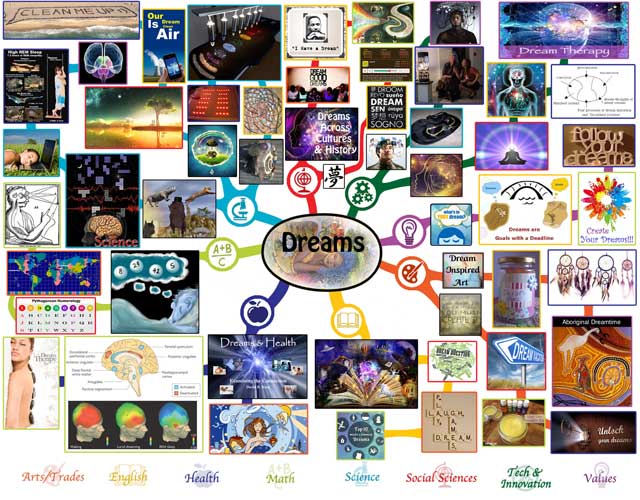
Lesson Plan Mindmap for Dreams ” Click to Enlarge
CLICK ICONS TO JUMP DIRECTLY TO EACH SUBJECT ON THIS PAGE








DREAMS LESSON PLAN
This page is a free-shared lesson plan archive for teaching all educational subjects within the context and theme of “Dreams”. It is purposed for use in community education environments, homeschool environments, traditional schooling environments, or as a supplemental and fun addition to any education program. As part of the complete Education for Life Program, this lesson plan is specifically designed to work in conjunction with the other components: Foundations of Teaching, Curriculum, Teaching Strategies, Learning Tools and Toys, Evaluation Model, and The Ultimate Classroom. If you’d like to learn how all these components work together, click here. Click here for the specifics focused on just using the lesson plans:
CLICK HERE FOR A DETAILED TUTORIAL ON HOW TO USE THIS LESSON PLAN
NOTE: The colors are provided as a possible linear progression (red/easiest to violet/most challenging) for people that might prefer a more linear structure. Our core philosophy, however, is that through creativity every color can be made easy or challenging for any learning level.
RELATED PAGES (mouse-over for descriptions and click for complete pages)
EDUCATION OVERVIEW | HOW TO USE THIS COMPONENT | OUR OPEN SOURCE PURPOSE
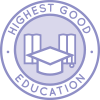
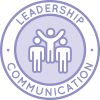
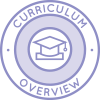
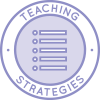
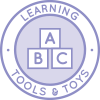
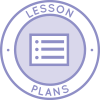
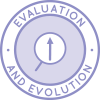
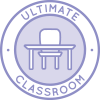
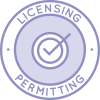

WAYS TO CONTRIBUTE TO EVOLVING THIS EDUCATION PROGRAM WITH US
SUGGESTIONS | CONSULTING | MEMBERSHIP | OTHER OPTIONS
A NOTE ABOUT ALL ONE COMMUNITY LESSON PLANS
The One Community lesson plans are intentionally designed for use in ANY educational environment and with ALL educational, cultural, religious/spiritual, and philosophical approaches to teaching and learning. They are designed without an ideological approach and specifically so they can be adapted to include the views, preferences, methodologies, and/or ideologies preferred by different parents and teachers.
For maximum flexibility and adaptation, they are also designed to be combined to teach multiple subjects at the same time. Doing this increases the creativity, effectiveness, and fun of your learning environment. Once we are on the property and operating our version of the complete school and Education for Life program, we will be adding video examples of how to combine the lessons. In the meantime, visit the Teaching Strategies page for a list of suggestions.
ARTS AND TRADES
CLICK HERE FOR THE COMPLETE SUBJECT OUTLINE FOR ARTS & TRADES
 | TEACHING ARTS AND TRADES WITHIN THE CONTEXT OF DREAMS |
 | The Arts- Using whatever materials you would like, make a picture* of the ideal place that your dreams would occur, during sleep.
- Using a tune to an existing song or your own tune, make up a song* about dreams, and sing it to others. If you are writing your own tune about dreams, you may choose whether to write your own lyrics or use someone else’s.
- Create a 6 month dream jar* by uncycling a used glass jar and inserting 6 items that will remind you to pursue specific artistic dreams. Each month you will randomly choose a new focus from the jar for the month. For example, if you would like to learn more about painting, paint a small item for the jar or if you would like to learn a specific style of dance, choose an item related to dance for the jar. You can refill the jar with new or the same items at the end of the six months if you like.
- Write a short monologue or play* about dreams, then perform it in front of a group of people.
- Think of an issue you would like to raise awareness about and relate it to dreams by writing an interactive piece*, such as a theater style street performance or a comedy routine. Perform this piece* in front of a small audience or somewhere in the community if possible. Either film it or have someone take notes about how the audience reacted and determine how you would improve the piece.
- Do online research on the history of dreamcatchers. Then make a series of dreamcatchers* representing at least 10 different cultures around the world, using as many materials you can find around your home or collect on nature walks. Include descriptions on the culture they represent and anything you found out about that culture and why they chose the particular design. Afterward explain how you developed your materials/designs, and share what you created in a public environment of some sort.
- Do research about what five or more various cultures traditionally believed happen during our dream state. Make a series of 5 or more artistic works* representing these beliefs. Include an accurate cultural description of each based on your research to help explain your findings to family and friends. Then either have them displayed or presented at a gallery or local college* and do a lecture* at that place about your findings and there impact on humanity.
|
 | Trades- Create a logo* for a travel agency called “dream vacations”.
- Design a webpage banner or cover photo* for an imaginary website or social media page about dream interpretation.
- Design a homepage* for an imaginary website about the importance of dreaming.
- Research essential oils that help people relax and promote pleasant dreams and different recipes for using them. Then make a batch* of sleep salve or bath salts with those essential oils and give it to 5-10 people to try out. Get their feedback and make any adjustments necessary in your next batch.
- Design and make a lavender sleep mask or pillow* with the word “dream” somewhere on it (using sewing, embroidery, etc.).
- Research your dream vacation destination. Then imagine you are working at the office of tourism of that locale and create a brochure* to promote it.
- Create and execute a comprehensive business plan* for a business that will provide dream-interpretation services.
- Design a comfortable, dream-themed room* which you believe would maximize relaxation and pleasant dreams by integrating feng shui, color, crystals and/or whatever you would like. Implement* this design project.
|
| CLICK HERE TO EMAIL US IF YOU HAVE AN IDEA TO ADD TO THIS SECTION |
* Please note that anything with an asterisk is just a suggestion. The diversity of options with asterisks are interchangeable and purposed to stimulate your own ideas. Any one of these suggestions could be replaced with a written paper, any form of art project (drawing, painting, music, paper mache, clay, wood, knitting/embroidery, metals, etc. etc.), an experiment, a presentation, a mindmap, a computer program, a web design project, a piece of poetry or a song, an interpretive dance or play, a group project, or anything else. What we feel is most important is that both the Learner and the Teacher agree on an exercise/activity they both feel would be maximally engaging, fun, and effective. If you come up with an idea we haven’t already thought of, please share it with us.
ENGLISH
CLICK HERE FOR THE COMPLETE SUBJECT OUTLINE FOR ENGLISH
 | TEACHING ENGLISH WITHIN THE CONTEXT OF DREAMS |
 | - Create a word cloud* of words associated with the theme “dreams”. If you are working with others, after you have finished your individual word clouds, combine all the words into a larger word cloud.
- Think of 5 words related to dreams/dreaming and create a set of flashcards* for teaching these words to other children.
- Create a crossword or word search puzzle* using ten words associated with the theme of dreams.
- Write five poems* using five different styles (haiku, limerick, etc.), all using the theme of dreams or dreaming. Share* which one was your favorite style and why.
- Do some research to make a list* of ten common themes that appear in people’s dreams. Then interview at least ten people to see what themes show up in their dreams and write a paper* or short story* using the information you have gathered.
- Do some research and make a list of five works of fictions whose endings include the main character waking up from a dream. Choose at least one of these books to read, read it, and then write a 5 page summary, interpretation, and review* of the book.
- Make a dream themed lesson plan* for teaching an English conversation class to adults living in a non-English speaking country.
- Write an essay* about 10+ classical/renowned stories, plays, songs, and/or musicals that were inspired by the writer’s dreams. Post it online as a blog post*, either on your own site or someone else’s, in order to provide inspiration to others.
|
| CLICK HERE TO EMAIL US IF YOU HAVE AN IDEA TO ADD TO THIS SECTION |
* Please note that anything with an asterisk is just a suggestion. The diversity of options with asterisks are interchangeable and purposed to stimulate your own ideas. Any one of these suggestions could be replaced with a written paper, any form of art project (drawing, painting, music, paper mache, clay, wood, knitting/embroidery, metals, etc. etc.), an experiment, a presentation, a mindmap, a computer program, a web design project, a piece of poetry or a song, an interpretive dance or play, a group project, or anything else. What we feel is most important is that both the Learner and the Teacher agree on an exercise/activity they both feel would be maximally engaging, fun, and effective. If you come up with an idea we haven’t already thought of, please share it with us.
HEALTH
CLICK HERE FOR THE COMPLETE SUBJECT OUTLINE FOR HEALTH
 | TEACHING HEALTH WITHIN THE CONTEXT OF DREAMS |
 | - Every day for a week, draw a picture* of the feeling you have when you wake up focusing on what it feels like when you remember your dreams versus what you feel like when you do not remember them, and use these pictures to create a dream chart*.
- Create a mindmap* showing 8 ways dreaming is beneficial to one’s health.
- Research lucid dreaming. Then, if you remember an experience of lucid dreaming you have had, write a description of it and how you think it may effect your health, and draw a picture* to accompany this. Otherwise, write a description of a lucid dream you would like to have that you believe would help you with your health and draw a picture* to illustrate it.
- Research the different stages of sleep and create a diagram* to explain these stages to others. Include when dreams occur and the health benefits of each stage.
- Label and color a diagram* showing the anatomy of the brain. Then look at scans of people’s brains as they are dreaming and create a report* on the findings. Make note of any difference between the areas that are used during different types of dreams and any effects this has on people’s health.
- Research safe herbal teas, foods, or other natural approaches to assist in better sleeping. Then choose one herb or a combination and make a recipe for a remedy*. If possible, find 1-3 people that are having trouble sleeping or dreaming and have them try your remedy for a few days to a week. Record and document the results and then share* your suggested remedy.
- Do research on 10 health problems that one’s dreams are said to reveal and why. Interview 10 people with either one of the health concerns or one of the dreams listed to see if the dreams they have had correlated to those health issues at any point in their life and make a table* and a report* about your results.
- Investigate the discovery of insulin or another discovery influenced by the person who dreamed it up, and its impact on medicine. Create a powerpoint or multimedia presentation* and present it to a group of interested learners.
- Acetylcholine was discovered after a scientist had a dream. Do some research about acetylcholine or another dream inspired discovery and the scientist that had the dream, and make a video presentation* about the discovery, its impact on science, and its relationship to dreaming.
- Write a thoroughly researched essay* about various mental health issues that affect dreaming (or vice versa) and how they do so.
- Write a dissertation level paper* about how ten psychologists view dreams and the unconscious (e.g. Freud, Jung). In your analysis and view of the relationship between dreams and the unconscious, include how you believe this information can be used to improve the health of humanity.
|
| CLICK HERE TO EMAIL US IF YOU HAVE AN IDEA TO ADD TO THIS SECTION |
* Please note that anything with an asterisk is just a suggestion. The diversity of options with asterisks are interchangeable and purposed to stimulate your own ideas. Any one of these suggestions could be replaced with a written paper, any form of art project (drawing, painting, music, paper mache, clay, wood, knitting/embroidery, metals, etc. etc.), an experiment, a presentation, a mindmap, a computer program, a web design project, a piece of poetry or a song, an interpretive dance or play, a group project, or anything else. What we feel is most important is that both the Learner and the Teacher agree on an exercise/activity they both feel would be maximally engaging, fun, and effective. If you come up with an idea we haven’t already thought of, please share it with us.
MATH
CLICK HERE FOR THE COMPLETE SUBJECT OUTLINE FOR MATH
 | TEACHING MATH WITHIN THE CONTEXT OF DREAMS |
 | - Using a Pythagorean conversion table, find the corresponding numbers for the word “dream”. Then add these five numbers together, plus find four other 5 letter words related to “dreams” (such as “lucid”) and add up each of their totals, and make a chart* of your results for each.
- Strange dreams have been reported in those suffering from jet lag. Using a printout map of the earth, with time zones, choose ten cities around the world and mark them on the map. Then, calculate the time difference from where you live to each of those cities. Now, imagine you are traveling to each city and sleeping and waking up there at your regular time (e.g. sleeping at 9 pm and waking up at 6 am) . After you have completed the previous instructions, create a table* showing the corresponding time back in your place of residence (e.g. what time would it be in San Francisco at 9 pm and 6 am in Shanghai?).
- In the Health section, you may have studied the stages of sleep. Now, find out the length of the average sleep cycle, and the minutes for each stage. Calculate the percentage of time spent on each stage of sleep, then create a chart* of your choice (pie chart, bar chart, etc.) illustrating this.
- Descartes’ dream was to unite algebra and geometry. Research Descartes and Cartesian coordinates. Using graph paper and a pen, create a graph with the (x,y)=(0,0) coordinates in the middle. Using a pencil, draw a circle that crosses the x and y axis at points that are whole numbers, then a square, triangle, and other shapes that both fit perfectly within the circle and that have corners that touch the edges of the circle. Indicate on each corner of those shapes the exact coordinates of their points. Afterward, create at least 25 various algebraic equations* for creating points and lines on this graph relative to one another and/or to create the shapes, such as x=y, y=2x, x=3y, x2+y2=4, and mark what each equation is for.
- Research the probability of ten different situations (e.g. getting into a car crash, winning the lottery) and compare this with the probability of ten different situations related to dreams (e.g. of a dream coming true, or that you will have the same dream again.) Then, visually organize these probabilities and try to explain the differences between them.
- Do some in depth research on Ramanujan or other mathematician with discoveries influenced by dreams. Report on your findings and implement a plan* for how others can use their dreams to develop new mathematical ideas.
- Using Kronecker’s Jugendtraum (“dream of youth”) or another example of how math ideas and dream ideas can be put together to create a theory, make a presentation* about combining existing math with dream ideas to create new theories. Videotape and free share* your presentation.
- Go online and collect five different articles on the topic of mathematical modeling and dreaming (e.g. “A mathematical exploration into manipulation and control of a bifurcative dreaming process” by Kamalanand Krishnamurthy and Mannar Jawahar Ponnuswamy in the International Journal of Dream Research). Add in any additional research necessary based on what you found, draw conclusions or create a unique perspective, and write an article* for a scholarly journal.
|
| CLICK HERE TO EMAIL US IF YOU HAVE AN IDEA TO ADD TO THIS SECTION |
* Please note that anything with an asterisk is just a suggestion. The diversity of options with asterisks are interchangeable and purposed to stimulate your own ideas. Any one of these suggestions could be replaced with a written paper, any form of art project (drawing, painting, music, paper mache, clay, wood, knitting/embroidery, metals, etc. etc.), an experiment, a presentation, a mindmap, a computer program, a web design project, a piece of poetry or a song, an interpretive dance or play, a group project, or anything else. What we feel is most important is that both the Learner and the Teacher agree on an exercise/activity they both feel would be maximally engaging, fun, and effective. If you come up with an idea we haven’t already thought of, please share it with us.
SCIENCE
CLICK HERE FOR THE COMPLETE SUBJECT OUTLINE FOR SCIENCE
 | TEACHING SCIENCE WITHIN THE CONTEXT OF DREAMS |
 | Life Sciences- Choose an animal and draw a picture* of what you think that animal would dream about.
- Observe any animals you know in your community while they sleep. Write down anything you notice. Discuss* the animals dream behavior with an adult.
- Research different plants that are said to enhance one’s dream state or sleeping cycles. Create a table* of at least 10 of these, and include how they create the result. (via what chemicals/properties etc.)
- Choose 3+ species and investigate how circadian rhythms affect their sleep and dreaming. Share what you learn in a group presentation* for 3+ others.
- Compare the effects of 3+ different sleeping environments and the influence, if any, this has on the individual dreaming. Write and open source a 5 page report* of your results.
- Thoroughly research the total amount, and the amount of REM of sleep time, per 24 hour cycle in 100+ different species. Compare the information to brain mass, % size of different parts of the brain, etc. of each animal and see what, if any, correlations and conclusions you can draw. Present your findings in a scholarly report* that is a quality level that such that it could be published. (Include at least 3 from each of the following classes: amphibians, birds, fish, invertebrates, reptiles, and 3 from each of the 21+ major orders of mammals.)
- Create a scientific study* on the science of how the brain turns reality into dreams, the science behind lucid dreaming, or any current issue in the field you feel is worth researching. Create a product or service* that you feel is valuable to the world based on your research and free share it.
|
 | Physical Sciences- Some say that quartz crystals may influence dreams. Make a collage* of 10+ pictures of 5+ different colors of quartz crystals and include images or drawings of where you or others may put them to influence their dreams.
- Read 3 to 5 books about quartz crystals and human dreaming. Write a 1 page report* on your findings.
- In a table* you create, compare the chemical composition of crystal quartz to the chemical composition of other crystals that native cultures consider to be beneficial to dreaming (amethyst, ametrine, azurite, lepidolite, moldavite) and how they are used.
- Research the structure of crystal quartz and create a model* of what one crystal quartz molecule by itself looks like. Then, try to create more complex models of the patterns in quartz. Research and write an analysis* for why/how you do or do not think the structure may affect sleep and/or dreams.
- Create a table* comparing the physical properties of quartz with other minerals also known for affecting sleep and enhancing dreaming. Look for similarities/differences between the mineral and what may cause their supposed affects, and write a paper* that explains your analysis.
- Write and publish a scholarly article* or book* about 3+ scientists who have had breakthroughs in the physical sciences they attributed to their dreams, such as Dmitri Mendeleev and the role of dreams in his creation of the periodic table.
- Research an invention that utilizes the properties of crystals to affect someone while they are asleep. Create a multimedia presentation* thoroughly explaining the ‘science’ behind it and the whys behind whether you believe it is true.
- Develop a new crystal based technology device* that aids in dreaming while a person is asleep. Test your device, then reevaluate. Open source your findings in an article* online.
|
 | Earth Sciences- Draw a picture* of what your dream or ideal natural environment on Earth would look like. Then look out the window, and make notes* of five differences between your drawing and what you see outside.
- Make two lists*, one of 10 changes that would help your local environment become the environment of your dreams, the second of what each is like now. Then make a flowchart/diagram* showing how we could make the environmental changes from what it is now to what you would like for it to be. Share this with your group and discuss.
- What is your biggest dream for a positive change to a current challenge in your state/province’s, etc. environment (clean water, clean air, preventing soil erosion, etc.)? Create a mindmap* brainstorming some ways this dream could be fulfilled. Make note of any strategies that would also affect other environmental factors.
- Determine what your biggest dream for the global environment is (clean water, clean air, preventing soil erosion, etc.). Then make a poster project* about what causes the current conditions, using diagrams and graphics to illustrate related systems (e.g. water cycle) and include an additional focus on potential solutions to any issues and/or ways to improve the situation.
- Choose 2+ books related to environmental sciences with the word “dream” in the title (e.g. The Dream of Earth by Thomas Berry, Transforming the Dream: Ecologism and the Shaping of an Alternative American Vision by Charles Sokol Bedna). Write a book review and share what you learned with others in the form of an e-flyer*.
- Determine what your biggest dream for the environment is (clean water, clean air, preventing soil erosion, etc.). Choose a location you have access to (e.g. local pond, hill, forest) and plan a research project* to assess the health of that environment, and what could be done in terms of attaining your biggest dream for the environment. Collect and analyze your data. Finally, write up your research and present* it to others in your group.
- Research permaculture and see how its known impacts and outcomes match your dreams for the Earth. Then plan and execute* a real-life permaculture project that can be used for teaching children of all ages about the environment.
|
| CLICK HERE TO EMAIL US IF YOU HAVE AN IDEA TO ADD TO THIS SECTION |
* Please note that anything with an asterisk is just a suggestion. The diversity of options with asterisks are interchangeable and purposed to stimulate your own ideas. Any one of these suggestions could be replaced with a written paper, any form of art project (drawing, painting, music, paper mache, clay, wood, knitting/embroidery, metals, etc. etc.), an experiment, a presentation, a mindmap, a computer program, a web design project, a piece of poetry or a song, an interpretive dance or play, a group project, or anything else. What we feel is most important is that both the Learner and the Teacher agree on an exercise/activity they both feel would be maximally engaging, fun, and effective. If you come up with an idea we haven’t already thought of, please share it with us.
SOCIAL SCIENCES
CLICK HERE FOR THE COMPLETE SUBJECT OUTLINE FOR SOCIAL SCIENCES
 | TEACHING SOCIAL SCIENCES WITHIN THE CONTEXT OF DREAMS |
 | - Remember a dream and discuss* it with 3 other people. Also have them tell you about a special dream they remember.
- Make a puppet show* that has the theme of waking up from a “dream/nightmare”. Talk with the audience about how they felt watching it and their own experiences with dreams/nightmares.
- Research and make a one page report* about 5 dreams that changed history, and include how they each changed history.
- Create a short survey* asking 3-5 questions about which type of dreams the person answering the survey has, and distribute it online to 500+ people of various cultures and experiences in countries across the globe. Create a chart or diagram* of the survey results, ranking them in order with the most common first.
- Choose 10 cultures you find to be unique and interesting. Then research the basic aspects and values of these cultures and how they view and/or use dreams in that culture. Create a five page report* of your findings.
- Write an essay* about the history of dreams and dreaming in your culture, another culture, or the world as a whole.
- Identify a specific culture that you’d consider is either very focused on the meaning of dreams or not-at-all focused on the meaning of dreams. Research, draw, and defend conclusions in a speech* about how this has affected or changed that culture.
- In some cultures, shamans play an important role in the community. Choose at least three different shamanic traditions, each one from a different continent, and write a 10 page essay* about their beliefs on dreams/dreaming, making note of differences as well as any effects that are apparent in the culture.
- Write a scholarly report* comparing and contrasting the ways 10 different countries’ legal systems deal with acts committed while sleepwalking. Create and defend your own idea of what would be the best legal approach and demonstrate* how you feel this approach would best be implemented in a court of law.
|
 | Foreign Languages
(Each of the following is to be completed in the foreign language(s) being studied)- Draw or print out and then color* in the Chinese character for dream. Brainstorm about what you think various elements of this pictogram represent. Then as a group discuss* an explanation of what it represents.
- Make a list* of the word for “dream” in five different languages which use the Latin alphabet. Note any similarities or differences.
- As a group, make a list of 10 or more different alphabets. Split these alphabets up between the group, then look the alphabets and what the word “dream” is in those same languages. At the end, the group should come together and present* their findings to the others, using visual displays*.
- Read a short story about dreams in the language you are studying. Write a one page summary* of the story and your opinion of it, in that language.
- Find a free, online lesson in the language you’re studying themed around dreams, dream jobs, dreams come true, etc. Take that online lesson* and complete each exercise.
- Go online to find an educational cartoon/documentary video about dreams or dreaming that is available in your primary language and the language you are studying. Watch the one in the foreign language first, and then discuss how much you thought you understood and what this understanding was based on (context, body language, word similarities, tone of voice…). Then watch the primary-language version and see how much of your understanding was correct and write a 5 page paper* on your experience and results.
- Write a play* about dreams that includes a lot of dialogue between two persons in the language you are studying. Present this to a small group using only dialogue and ask them if they understood what you were saying, and have them explain their interpretation. Then do the same with a different group, but this time, have the actors use body language and props as well. Write up an analysis* of the results of the two interpretations.
- Choose a foreign language, and then make a lesson plan* meant for instructing English-speaking persons who are learning that language, using the theme of dreams. Elements to include are vocabulary, grammar points, cultural points and conversation.
|
| CLICK HERE TO EMAIL US IF YOU HAVE AN IDEA TO ADD TO THIS SECTION |
* Please note that anything with an asterisk is just a suggestion. The diversity of options with asterisks are interchangeable and purposed to stimulate your own ideas. Any one of these suggestions could be replaced with a written paper, any form of art project (drawing, painting, music, paper mache, clay, wood, knitting/embroidery, metals, etc. etc.), an experiment, a presentation, a mindmap, a computer program, a web design project, a piece of poetry or a song, an interpretive dance or play, a group project, or anything else. What we feel is most important is that both the Learner and the Teacher agree on an exercise/activity they both feel would be maximally engaging, fun, and effective. If you come up with an idea we haven’t already thought of, please share it with us.
TECHNOLOGY AND INNOVATION
CLICK HERE FOR THE COMPLETE SUBJECT OUTLINE FOR TECHNOLOGY AND INNOVATION
 | TEACHING TECHNOLOGY & INNOVATION WITHIN THE CONTEXT OF DREAMS |
 | Technology- Use a computer or app to draw a picture* of what you think a “dream machine” would look like.
- Brainstorm a list* of five ways you think that people who don’t have good dreams could use existing technology to try to have better dreams.
- Some people like to keep dream diaries and pens/pencils beside their beds so that they can write down their dreams right after waking up. Think of a better way to record one’s own dreams, using technology available to you. Then set up your creation* and test it for a week to see what dreams you have recorded.
- Watch a dream related documentary such as FlLicKeR by Nik Sheehan, and draw a diagram*showing how the dreamachine or other dream related technology featured in this documentary works, both mechanically and in terms of its effects on humans.
- A sleep mask which promotes the consciousness within a dream that one is dreaming has been created. They would like for users to be able to dream of whatever they like and control what happens in their dreams. Do some research into the technology behind this invention and then create a poster* explaining this technology.
- Do some research and design/create* your own sleep mask which would promote consciousness within a dream, known as lucid dreaming. Include a disclaimer informing others if this machine is not to be used by certain persons, in case of seizures.
- Do some research on the dream machine invented by Brion Gysin or another version, and create your own version*. If needed, create a note informing others that this machine is not to be used by certain persons, in case of seizures.
- There was a Japanese study published about the creation of “dream machines” which could record images seen in a person’s dreams. Do some research and see how their “dream machine” works. Then write a detailed article* about five ways you would try to improve it for the benefit of humanity.
|
 | Innovation- Practice mindful meditation* while eating food. Think about how that felt compared to the way you normally eat. Share your experience with 2 others, and discuss any impacts you believe mindfulness may have on your sleep and dreams.
- Take a deep breath and close your eyes. Then imagine yourself in any dream world of your choice (e.g. in clouds, in a rainbow, in space…). Make note of what you see, hear, feel, smell, and think. When you are finished, create a mindmap* to depict what you experienced in your imaginary dream world.
- Keep a journal* for a week and record any dreams you have. The following week, practice mindful meditation with the goal of remembering your dreams, and record any dreams you have. Compare the type of dreams and your ability to remember them before and after you practiced mindful meditation.
- Research* mindfulness and lucid dreaming. Choose a technique or tool that others have used, or one you create, to increase your own lucid dreaming. Use the tool or technique every day and record your dreams every night for a week. Look for any changes in your lucidity during dreaming. Open source your results.
- Mindfulness meditation is believed by some to lead to more interesting dreams as well as awareness of one’s own self-talk. Develop a meditation* to enhance your dreamstate. Practice the meditation daily for a month recording your results in a dream journal. Write and open source a blog* of the experience and the results, including whether or not you have more interesting dreams during this period.
- Choose 10 innovators from the indigo level of the innovation molecule and investigate the influence dreams had on the development of their ideas. Write an essay combining the results of your study with your own ideas on the relevance of dreams and the development of new ideas. Free share your paper.*
- Mindfulness meditation is believed by some to lead to more interesting dreams as well as other skills which can improve interpersonal relationships. These include paying more attention to the outside world and other people, noticing that there is a gap between what happens and how we respond (and how we can choose how we respond) and becoming aware of potential results of our actions (such as losing our tempers) before these actions ever take place (and stopping them before they do so). Research mindfulness meditations (e.g.http://marc.ucla.edu/body.cfm?id=22) and try to do at least 10 minutes of a meditation of your choice meditation each day for two weeks. Keep a journal about your experiences both in and outside of meditation, and inside and outside of dreams. Share what you learned in an online format*.
- Read a book about dreaming and mindfulness techniques. Then, using yourself as a “guinea pig”, try the techniques in the book which you feel comfortable with. Then note the results, such as whether or not the techniques worked and your experiences, and write a blog entry* about this project.
- Develop new techniques* to enhance the dream state. Present your ideas at a live conference. Film and open source the video of your talk.*
|
| CLICK HERE TO EMAIL US IF YOU HAVE AN IDEA TO ADD TO THIS SECTION |
* Please note that anything with an asterisk is just a suggestion. The diversity of options with asterisks are interchangeable and purposed to stimulate your own ideas. Any one of these suggestions could be replaced with a written paper, any form of art project (drawing, painting, music, paper mache, clay, wood, knitting/embroidery, metals, etc. etc.), an experiment, a presentation, a mindmap, a computer program, a web design project, a piece of poetry or a song, an interpretive dance or play, a group project, or anything else. What we feel is most important is that both the Learner and the Teacher agree on an exercise/activity they both feel would be maximally engaging, fun, and effective. If you come up with an idea we haven’t already thought of, please share it with us.
VALUES
CLICK HERE FOR THE COMPLETE SUBJECT OUTLINE FOR VALUES
 | TEACHING VALUES WITHIN THE CONTEXT OF DREAMS |
 | - Every morning for a week, record in a dream journal* pictures and words to represent the dreams you had the night before. Notice if there are any any differences this made to you (e.g. your quality of dreams or ability to remember them). Share* your reflections on this experience and include an explanation on why you feel this was a valuable experience or why it was not.
- As a group, upcycle a glass jar and decorate it so that it becomes a “dream jar”. Each person should think of at least one dream or aspiration and write it on a piece of paper* and include their name. Everyone should put their piece(s) of paper* into the group jar and the contents of this jar should be revisited in 3 months to see if aspirations have been fulfilled or have changed. Take turns talking as a group about the results and if people have changed their goals, why this was the case. This can be repeated by removing fulfilled or outdated dreams and adding new ones as often as the group believes to be valuable.
- Draw a cartoon* illustrating a person encouraging someone else to follow their dreams. Discuss the picture with 3 other people.
- Using a variety of materials, create a double sided or two column collage* of what both: 1. Having dreams at night, and 2. What following your dreams/aspirations mean to you. Display it in your community and have discussions* with people about their dreams and aspirations as they look at your work.
- Create an illustration* showing your biggest dreams and aspirations for yourself and how that matches with your values. Share the picture, and its meanings to you, in a presentation.
- Write a short story* about a person who is following their aspirations and dreams and the experiences they encounter that challenge some of their personal values. Publish and free share your story.
- Ponder and research the ethical implications of the ability of people to monitor others’ dreams (e.g. in prisons, homes, boarding schools, orphanages, homeless shelters, etc.). Based on your conclusions, make a short film* showing the negative and/or positive things that could happen with such technology.
- In addition to monitoring people’s dreams, some people would like to have the technology to be able to control or enter other people’s dreams. Do some research and explore your own values system on the pros-and-cons and “ethical” implications of such technology. Write a thesis* arguing either for or against such technology including strategies for either how to implement or prevent the technology, whichever you propose and free share your opinion on the internet in an online journal.*
|
| CLICK HERE TO EMAIL US IF YOU HAVE AN IDEA TO ADD TO THIS SECTION |
* Please note that anything with an asterisk is just a suggestion. The diversity of options with asterisks are interchangeable and purposed to stimulate your own ideas. Any one of these suggestions could be replaced with a written paper, any form of art project (drawing, painting, music, paper mache, clay, wood, knitting/embroidery, metals, etc. etc.), an experiment, a presentation, a mindmap, a computer program, a web design project, a piece of poetry or a song, an interpretive dance or play, a group project, or anything else. What we feel is most important is that both the Learner and the Teacher agree on an exercise/activity they both feel would be maximally engaging, fun, and effective. If you come up with an idea we haven’t already thought of, please share it with us.

OTHER RESOURCES
We're building a resource section. Click here if you have a suggestion or resource for this page.
OPEN SOURCE SUBJECT RESOURCES (click icons for complete pages)



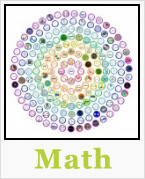



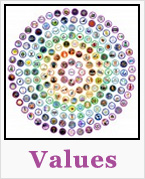
OPEN SOURCE CURRICULUM OUTLINES (click image for summaries and links to complete pages)
CARE
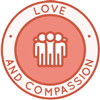
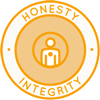
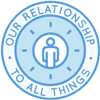
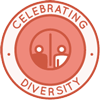
SHARE
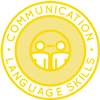
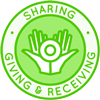
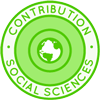
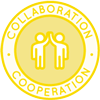
PLAY
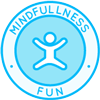
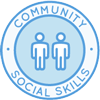
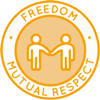
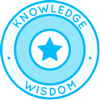
OPEN SOURCE TEACHING METHODOLOGY SUMMARIES
Montessori | Waldorf | Orff | Reggio | Multi-Intelligence | Bloom's Taxonomy | Study Tech | I-WE
INDEX OF ALL THE ONE COMMUNITY OPEN SOURCE LESSON PLANS

Click this image for the Lesson Plans for Life page with links to the rest of the lesson plans
THE WORLD'S LARGEST ONLINE FREE EDUCATION RESOURCE ARCHIVE
RELATED CONTENT AND OTHER RELATED RESOURCES
We're building this resource section. Click here if you have a suggestion or resource for this page.

























 One Community
One Community



